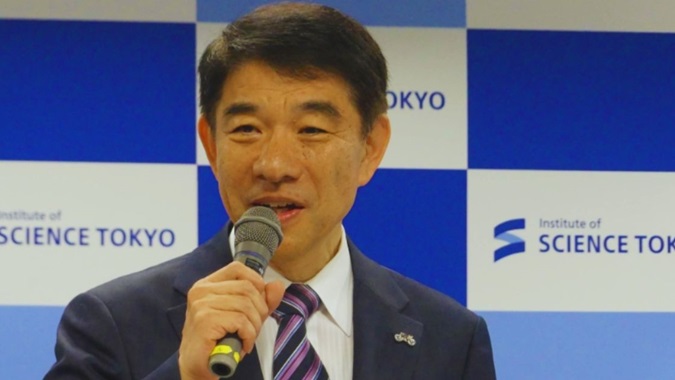The newly formed Institute of Science Tokyo, born from the merger of the Tokyo Institute of Technology (Tokyo Tech) and Tokyo Medical and Dental University (TMDU), is set to reapply for a grant from a ₹10 trillion ($62.6 billion) government fund. This ambitious move aims to elevate the institution to the status of a world-class university. Naoto Ohtake, who was recently chosen as the inaugural president, announced this decision on Monday.
A New Leadership and Vision
Inaugural President: Naoto Ohtake
Naoto Ohtake, a distinguished material science specialist, was appointed as the first president of the Institute of Science Tokyo. His selection, made by a committee of internal and external experts, positions him at the helm of the university from October 1, pending approval from the education ministry. Ohtake’s vision includes significant internationalization efforts, aiming for 30% of all undergraduate science and engineering majors to be international students by 2050. This goal is a substantial increase from TMDU’s current 10% and Tokyo Tech’s 5%.
Selection Process and Leadership Team
Ohtake was one of three candidates shortlisted by the selection committee in April. The other candidates included Yujiro Tanaka, the current president of TMDU, and Kazuya Masu, the current president of Tokyo Tech. Ohtake’s leadership will span 3½ years, during which he will implement strategies to enhance the university’s global competitiveness and research excellence.
The Merger and Its Implications
Background and Objectives
The merger of Tokyo Tech and TMDU is a strategic move aimed at positioning the new entity, Science Tokyo, to compete for significant government funding. The ₹10 trillion fund, established in 2022 under the Universities for International Research Excellence program, is designed to support Japanese universities in achieving global prominence through innovative educational, research, and medical activities.
Previous Application and Future Plans
Last year, Tokyo Tech and TMDU jointly applied for the fund but were not selected. Instead, Tohoku University received the first grant, outpacing prominent rivals like the University of Tokyo and Kyoto University. With the education ministry set to accept new applications for the next fiscal year, Science Tokyo is preparing a robust proposal leveraging its unique strengths and governance model.
Governance and Organizational Structure
Innovative Governance Model
To facilitate a smooth merger and effective management, Science Tokyo will adopt a five-pronged governance structure. This model includes roles such as president, chief medical officer, chief financial officer, chief integration officer, and a newly created provost position. Ohtake has expressed his intention to appoint TMDU’s Yujiro Tanaka as the provost, highlighting a collaborative approach in integrating the two institutions’ leadership.
Enhancing Research and Educational Synergies
The merger aims to create “convergence science,” integrating the strengths of both predecessor institutions across diverse fields, including engineering, medicine, dentistry, philosophy, and social sciences. This interdisciplinary approach is expected to foster innovation and attract substantial funding.
Current Standing and Future Aspirations
Comparative Analysis
While both Tokyo Tech and TMDU are highly regarded within Japan, they are smaller compared to some of their peers. Tokyo Tech has approximately 10,000 students, and TMDU has about 3,000 students, which is significantly less than institutions like the University of Tokyo and Kyoto University. Currently, about 2,100 of their combined students are from overseas.
Internationalization Goals
Ohtake’s ambitious target to increase the proportion of international students to 30% by 2050 reflects a strategic shift towards global engagement. This effort is part of a broader strategy to enhance the university’s international profile and research collaborations.
The formation of the Institute of Science Tokyo marks a significant milestone in Japan’s higher education landscape. With a clear vision for internationalization and a strong governance framework, the institution is well-positioned to compete for the prestigious government grant. If successful, this funding will not only bolster its research capabilities but also elevate its status as a leading global university.
FAQs
1. What is the Institute of Science Tokyo?
The Institute of Science Tokyo is a new university formed by the merger of the Tokyo Institute of Technology (Tokyo Tech) and Tokyo Medical and Dental University (TMDU). It aims to become a world-class institution with a strong focus on internationalization and interdisciplinary research.
2. Who is the inaugural president of the Institute of Science Tokyo?
Naoto Ohtake, a material science specialist, has been appointed as the inaugural president. He will start his tenure on October 1, pending approval from the education ministry.
3. What is the ₹10 trillion fund?
The ₹10 trillion fund, established in 2022 under the Universities for International Research Excellence program, is a government endowment designed to support Japanese universities in achieving global prominence through innovative educational, research, and medical activities.
4. Why did Tokyo Tech and TMDU merge?
The merger aims to position the new entity, Science Tokyo, to compete for significant government funding and to enhance its global competitiveness through combined strengths in various fields of study.
5. What are the goals of the Institute of Science Tokyo?
The primary goals include becoming a world-class university, significantly increasing the number of international students, fostering interdisciplinary research, and securing substantial government funding to support its initiatives.








